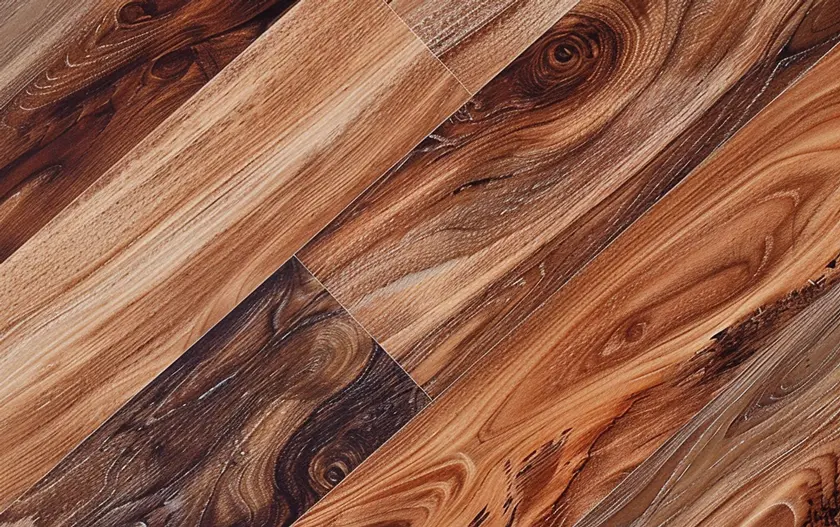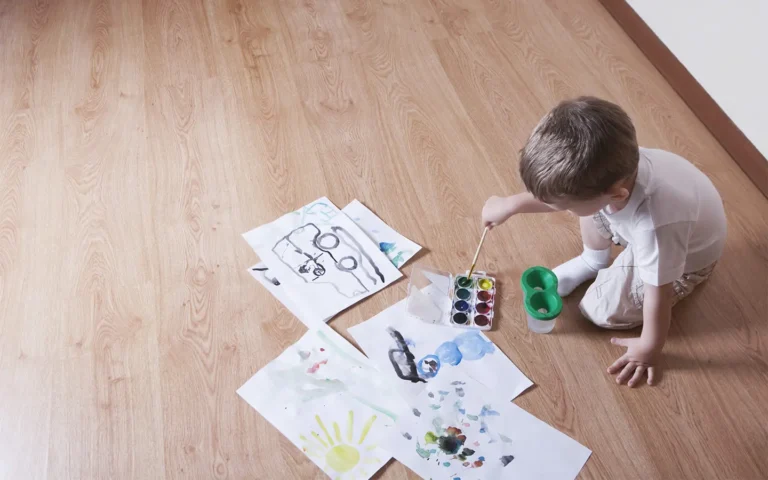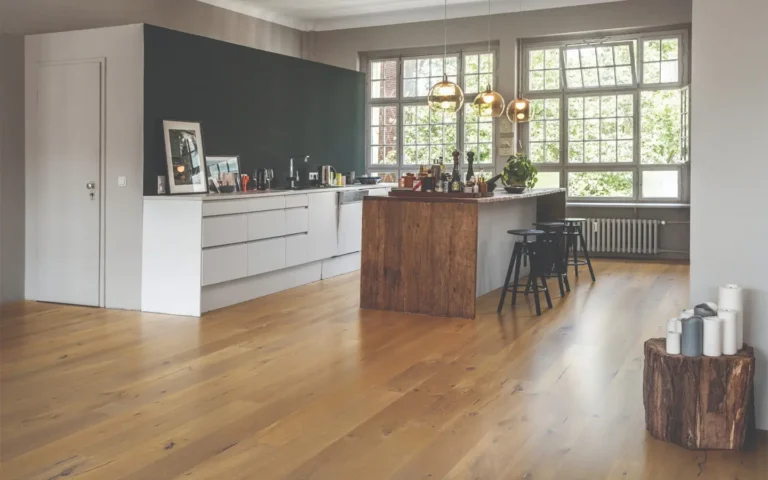Peel-and-stick vinyl flooring has become a popular, affordable, and simple solution for floor renovations. In this article, we will be going through the selection and preparation process, as well as helping you figure out what the best underlayment for peel and stick tile flooring is.
The Basics of Peel-and-Stick Vinyl Flooring
Peel-and-stick vinyl flooring features tiles or planks equipped with a self-adhesive backing. It makes the installation process quite simple and user-friendly, even for those new to DIY projects.
This flooring type adapts well to various decor styles, so you shouldn’t have any issues matching it to the overall look of your home or workspace.
Importance of Underlayment
The successful application of peel-and-stick vinyl tiles heavily relies on a perfectly smooth and clean underlayment; any imperfections can significantly hinder adhesion, potentially leading to tiles lifting or shifting over time.
Therefore, the right underlayment is not just about creating a smooth canvas but also about ensuring the longevity of your flooring. Opting for a high-quality underlayment can also enhance the feel underfoot, making the vinyl flooring feel even more luxurious and stable.
Best Brands of 2024
Preparing the Subfloor
Preparation of the subfloor for peel and stick vinyl is critical and involves ensuring the subfloor is not only clean and smooth but also free from moisture and debris.
This might mean addressing any cracks or holes with a suitable filler and ensuring the floor is level to prevent any future issues with tile adhesion.
Unlike more rigid flooring types that might mask slight imperfections in the subfloor, peel-and-stick vinyl requires meticulous attention to detail during prep work to ensure a flawless finish.
Suitable Subfloor Types for Peel-and-Stick
Concrete
Concrete is a good subfloor option, especially for basements and ground level places. Just make sure there are no moisture problems which may cause mold to grow under the flooring. Always do a moisture test before installing!
Wooden Floors
Wooden floors can provide a strong foundation for peel-and-stick tiles, but they must not have any joints and should be smoothly sanded so there are no rough areas.
Moreover, you should seal the wood because it helps prevent moisture from affecting tile adhesion.
Plywood
Plywood is a great option for smooth underlayment, particularly when you use a quarter-inch plywood substrate to get an even surface.
To ensure the finest outcome, it is important to fix the plywood sheets firmly onto the subfloor beneath, so they don’t shift and disturb the vinyl tiles.
Existing Vinyl Flooring
As long as the existing vinyl is in good condition, not peeling, and thoroughly adhered to the subfloor, it can serve as a base for new self-adhesive tiles. The surface should be cleaned and any glossy finishes roughened to improve adhesion.
Smooth Tile Surfaces
Ceramic, porcelain, or stone tile can serve as a subfloor if the surface is smooth, the grout lines are filled to create a level surface, and any polished finish is removed to enhance the grip of the adhesive.
Underlayment Panels
Certain underlayment panels designed specifically for vinyl flooring can provide an ideal surface. These panels can help smooth out minor imperfections in the subfloor and provide a moisture barrier.
Radiant Heated Floors
Vinyl tiles can be installed over radiant heated floors, provided the temperature doesn’t exceed the vinyl flooring’s specified tolerance. It’s important to ensure the system is fully embedded and covered with a suitable subfloor material.
Avoiding Unsuitable Subfloors
Not every surface is good for peel-and-stick vinyl tiles. Floors which are already covered with linoleum, rubber, laminate or carpet cannot provide a suitable base and must be taken off.
Linoleum
Though linoleum is strong enough, it may not be the best choice as a base for peel-and-stick vinyl tiles. Linoleum floors can have textured surfaces which prevent the vinyl tiles from sticking well.
Rubber Flooring
The main issue with rubber is that it’s not a compatible material with vinyl. Because rubber floorings are flexible and soft, it might make peel-and-stick tiles move around too much – not sticking correctly.
Also, rubber has a tendency to expand and contract along with temperature alterations, which will cause warping in the vinyl tiles.
Laminate
Laminate floors usually have a shiny surface, and this may not let the adhesive on vinyl tiles stick properly. Moreover, laminate flooring often has a small bevel between planks, which might show on vinyl tiles, making them look less smooth.
Carpet
The texture and thickness of carpet makes it inappropriate to peel and stick vinyl tiles. The surface is soft and not level, which stops the vinyl tiles from being flat or sticking well. Even if the carpet is thin, it can result in an unstable base that causes the tiles to shift or rise up.
Also, the moisture that can be present in carpet fibers is a threat to mold developing under the vinyl tiles.
Conclusion
In conclusion, it’s very important to choose the right base layer for stick-on vinyl floor tiles if you want your flooring work to last.
Whether you’re working with concrete, plywood, existing vinyl, tile surfaces, specialized underlayment panels, or even radiant heated floors, proper preparation and compatibility with your chosen vinyl tiles are paramount.
Each type of subfloor has its own advantages, but it’s important to think about things like managing moisture and making sure the surface is even and stable in order to make a good flooring foundation.
By carefully preparing the subfloor and adhering to the manufacturer’s recommendations, you can achieve a durable and attractive finish that transforms your space.
Vinyl self-adhesive tiles offer a versatile, cost-effective flooring solution that, when paired with the right subfloor, can suit nearly any room in your home!
About The Author

Christian Southards
April 18, 2024
Christian is a freelance everything-writer, editor, and interior design nerd. When he’s not writing about flooring and remodeling, he’s either writing news for the California American Legion or working with his hands on his house. His favorite type of flooring is hardwood, but admits to having carpet in his bedroom.





